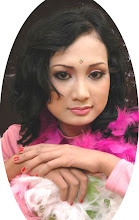
Phoenix dactylifera commonly known as the true date palm, is a palm in the genus Phoenix, cultivated for its edible sweet fruit. Due to its long history of cultivation for fruit, its exact native distribution is unknown, but probably originated somewhere in the desert oases of northern Africa, and also Western Asia. It is a medium-sized plant, 15–25 m tall, often clumped with several plants from a single root system, but often growing singly as well. The leaves are pinnate, 3–5 m long, with spines on the petiole and about 150 leaflets; the leaflets are 30 cm long and 2 cm broad. The full span of the crown ranges from 6 to 10 m.
History of dates
Dates have been a staple food of the Middle East for thousands of years. They are believed to have originated around the Persian Gulf, and have been cultivated since ancient times from Mesopotamia to prehistoric Egypt, possibly as early as 4000 BCE. The Ancient Egyptians used the fruits to be made into date wine, and ate them at harvest. There is archaeological evidence of date cultivation in eastern Arabia in 6000 BCE. (Alvarez-Mon 2006).
In later times, Arabs spread dates around South and South West Asia, northern Africa, and Spain and Italy. Dates were introduced into Mexico and California by the Spaniards by 1765, around Mission San Ignacio.
The fruit is known as a date.[1] The fruit's English name, as well as the Latin species name dactylifera, both come from the Greek word for "finger," dáktulos, because of the fruit's elongated shape. Dates are oval-cylindrical, 3–7 cm long, and 2–3 cm diameter, and when unripe, range from bright red to bright yellow in colour, depending on variety. Dates contain a single seed about 2–2.5 cm long and 6–8 mm thick. Three main cultivar groups of date exist: soft (e.g. 'Barhee', 'Halawy', 'Khadrawy', 'Medjool'), semi-dry (e.g. 'Dayri', 'Deglet Noor', 'Zahidi'), and dry (e.g. 'Thoory'). The type of fruit depends on the glucose, fructose and sucrose content.
The date palm is dioecious, having separate male and female plants. They can be easily grown from seed, but only 50% of seedlings will be female and hence fruit bearing, and dates from seedling plants are often smaller and of poorer quality. Most commercial plantations thus use cuttings of heavily cropping cultivars, mainly 'Medjool' as this cultivar produces particularly high yields of large, sweet fruit. Plants grown from cuttings will fruit 2–3 years earlier than seedling plants.
Dates are naturally wind pollinated but in both traditional oasis horticulture and in the modern commercial orchards they are entirely pollinated manually. Natural pollination occurs with about an equal number of male and female plants. However, with assistance, one male can pollinate up to 100 females. Since the males are of value only as pollinators, this allows the growers to use their resources for many more fruit producing female plants. Some growers do not even maintain any male plants as male flowers become available at local markets at pollination time. Manual pollination is done by skilled labourers on ladders, or in some areas such as Iraq they climb the tree using a special climbing tool that wraps around the tree trunk and the climber's back to keep him attached to the trunk while climbing. Less often the pollen may be blown onto the female flowers by a wind machine.
Fresh dates, clockwise from top right: crunchy, crunchy opened, soft out of skin, soft.
Parthenocarpic cultivars are available but the seedless fruit is smaller and of lower quality.[citation needed]
Dates ripen in four stages, which are known throughout the world by their Arabic names kimri (unripe), khalal (full-size, crunchy), rutab (ripe, soft), tamr (ripe, sun-dried). A 100 gram portion of fresh dates is a source of vitamin C[citation needed] and supplies 230 kcal (960 kJ) of energy. Since dates contain relatively little water, they do not become much more concentrated upon drying, although the vitamin C is lost in the process.
Dates are an important traditional crop in Turkey, Iraq, Arabia, and north Africa west to Morocco and are mentioned more than 50 times in the Bible. In Islamic countries, dates and yogurt or milk are a traditional first meal when the sun sets during Ramadan. Dates (especially Medjool and Deglet Noor) are also cultivated in southern California, Arizona and southern Florida in the United States.
Date palms can take 4 to 7 years after planting before they will bear fruit, and produce viable yields for commercial harvest between 7 to 10 years. Mature date palms can produce 80–120 kilograms (176–264 lb) of dates per harvest season, although they do not all ripen at the same time so several harvests are required. In order to get fruit of marketable quality, the bunches of dates must be thinned and bagged or covered before ripening so that the remaining fruits grow larger and are protected from weather & pests such as birds.
by : Wiki
 Subscribe
Subscribe













